The images in the following program are highly sensitive and may be as disturbing to viewers as they were to us. However, we have to show the truth about cruelty to animals, praying that you will help to stop it.
HOST: This is the Stop Animal Cruelty series on Supreme Master Television. This week we take a look at some of the customs and traditions associated with Easter that cause immense suffering to a number of animal species.
Easter Sunday, which annually commemorates the beginning of the new life of Jesus Christ will be observed this year on April 24, 2011. It is one of the happiest and most glorious celebrations in Christianity. How can such a day of joy and love involve cruelty to animals? Let's take a look at some of the traditions.
Baby Lambs
Baby lambs are regarded as a symbol of Jesus and thus have come to represent Easter. Both Jesus and the little lamb are so very gentle, loving, and kind. The Holy Bible often refers to Jesus as the “lamb of God.”
Jesus also called himself the “Good Shepherd” who descended onto Earth to look after his “flock” or followers. This great Master, by his example, taught us to care for and protect these and all other beings. On Easter Sunday, families often gather together to enjoy a feast and one of the items frequently on the menu is the flesh of the innocent and helpless baby lamb. Forcibly wrenched from their mother's side at only a few weeks of age, these vulnerable little sheep are taken to a slaughterhouse, hung up on a conveyor belt by the back legs, have their throats violently slit open, and then left to bleed to death. Later their skins are savagely ripped from the bodies and their flesh cut into large pieces for the “roast lamb” dinner.
VOICE (Baby Lamb): What is happening to me? Why am I in this enclosure? Yesterday I was suckling on my mother's milk, among the other members of my family. Today, I have been taken to a place called a slaughterhouse. There is blood everywhere, on the floors, on the walls, and on the man who put me in the pen. And the stench of rotting flesh and entrails is making me sick.
My little sister was pulled out of her pen by the neck a few moments ago. The sound of her cries as she was dragged away still echoes in my ears. The man with the blood on his clothes looked at me and said, “I'll be back for you next.” What did he mean by that? What have I done to be here in this place?
Rabbits
Another animal associated with Easter is the rabbit, as she represents spring's fertility and abundance of new life. Influenced by advertisements or stories of the Easter bunny, children may ask to have a rabbit as a companion at this time of year or their parents may impulsively buy a baby bunny as a gift. Unless the family is prepared to make the commitment to properly care for him or her, the purchase will mean a short life of utter misery for the rabbit.
VOICE (Rabbit): I am so afraid that I just can't stop shaking. Last week I was taken away from my mother and father and all the other members of my family. A lady put me in a small wire cage and tied a blue ribbon around my neck. My feet hurt in this cage and the ribbon cuts into my neck, but she doesn't seem to notice.
She told me her daughter would be happy to have a nice Easter bunny like me. But I don't like this cage, I don't like this house, and I am very, very lonely. Oh please, please help me get back to my own family!
HOST: Mary Cotter, vice-president of the House Rabbit Society, an international non-profit organization that rescues rabbits from animal shelters states that many of the bunnies adopted as Easter pets will never live to see their first birthday.
Some die from neglect or improper care, others are dropped off at animal shelters where euthanization is a common fate, while still others are simply abandoned in local parks.
Baby Chicks
The baby chick is closely identified with Easter as she represents the new life of Jesus. Often pet stores offer baby chicks for sale during the Easter season, and parents purchase them for their children as an Easter morning gift.
A sickening practice of some farms is to inject dyes into fertilized chicken eggs so that the babies hatched are different colors such as pink, blue, or green. This is done to make chicks look supposedly “cuter” and more desirable to buyers.
VOICE (Baby Chick): I hatched out of my egg only two days ago. Since then my life has been a continuous nightmare. For a while I was jammed inside a very uncomfortable cardboard box with 25 other babies. I don't know where my Mommy is. Why isn't she looking after me? Today a very big person saw me in my new home, the pet store, and said to the clerk he will take me away later after he is finished with work. I am very afraid and lonely. What will this big person do with me?
HOST: Delicate and vulnerable, the bones of the chicks easily break through rough handling and they may be inadvertently stepped on by children or adults. When the family no longer wants the gentle baby chick for whatever reason, she may be put outside to languish in a tiny cage, sent to an animal shelter, or abandoned in the wild where the chances of survival are slim to none. According to the American Humane Association, the majority of baby chicks given as Easter gifts die from stress or the lack of proper care within a few weeks of the holiday.
Egg-laying Hens
The Romans believed that “All life comes from an egg.” Christians consider eggs to be “the seed of life” and thus are symbolic of the resurrection of Jesus Christ. Some families hide colored eggs for their children to find during Easter or serve them for breakfast on this day.
Did you know that egg production on factory farms is a story of extreme anguish and brutality? Almost all eggs come from facilities where chickens must live in miniscule battery cages stacked tier upon tier in huge warehouses.
With four to six birds to a cage, they do not have enough room to turn around or even spread one wing. Eggs are taken away from the hens by a conveyor belt. The overcrowding induces stress in the hens and they begin to peck at each other. Rather than giving the hens more space, a standard vicious practice in the industry is to cut a portion of their beaks off with a hot blade.
After a year or two a hen's egg production begins to decline and they are then gassed to death in rolling kill carts. Young birds are brought in to start this horrific and inhumane cycle all over again. Eating, hiding or decorating eggs for Easter only helps to perpetuate this barbarism.
Pigs
HOST: Sadly roast ham is also often consumed during Easter. Pigs on factory farms are treated abominably from the day they are born until the day they are murdered. Thousands of pigs are tightly packed into sheds. Barely able to move, they are forced to stand knee deep in their own filth, inhaling ammonia-filled air, the smell of which is unbearable. After a few months, the young porcine, along with hundreds of his brothers and sisters, are all ruthlessly slaughtered, skinned, and sliced.
Is a moment's taste of roast ham on the tongue worth all of this despair and agony? Jesus Christ taught we must show kindness to all animals, and that they were placed here on Earth to act as our helpers. One of the Ten Commandments in the Holy Bible is “Thou shalt not kill.” Not only does this mean that we are to never slay our fellow humans, it also means that God intended us to always preserve the lives of his beautiful creations.
SONG CAPTION Sixth Commandment Music, lyrics, vocals by A.T. Musical arrangement by Geoff Duncan
Singer(f): All living beings carry God's light His spark in all creation shines bright, A sacred soul in all things living, The Divine Love is always giving
But we take Life, we waste and use it. The Divine spark, we just abuse it. The sacred lives, once free and able, Turned into corpses for our table
Physically, spiritually, logically it don't make sense What part of 'Thou Shalt Not Kill' don't you understand?
Physically, spiritually, logically it don't make sense What part of 'Thou Shalt Not Kill' don't you understand? How can we ever reach Peace among men When every day we kill our brethren? When will we stop this habitual genocide To satisfy our blood-thirsty appetite?
Physically, spiritually, logically it don't make sense What part of 'Thou Shalt Not Kill' don't you understand?
Physically, spiritually, logically it don't make sense What part of 'Thou Shalt Not Kill' don't you understand?
HOST: In a 2009 videoconference in Germany, Supreme Master Ching Hai spoke about the need to show compassion to all animals and why we cannot bear to watch when they are tortured.
Supreme Master Ching Hai: Our original God Nature is compassion and love. I repeat again and again and again: You are not that. You are compassion, you are love incarnate. Please return to it. So when we force ourselves to watch the videos of animal cruelty, which by the way are purposefully hidden from us for a reason so that we don't know, we flinch when we watch this cruelty even on video, or even when we heard reports about it. Just like before, we heard one of our brothers report about the cruelty everywhere - we flinch, we cringe, we look away, we cry, or we scream. We have nightmares. We cannot bear to see the cow, the pig, the chicken's throat punctured or slit so they bleed to death.
And other more gruesome, unimaginable ways of torturing animals. Or the force-feeding of a foie gras goose, or purposeful underfeeding of a baby veal calf, of confining him so that he has to keep his tender meat, that he could not even move his body for the rest of his tender short life.
Or the gruesome fate of baby chickens where the females have their tender beaks cut off while hanging upside down and males are grinded alive or suffocated to death.
Supreme Master Ching Hai: This is not the way God intended for us to live with our co-inhabitants. This is not the way we should behave as children of God.
The animals are our helpers, our friends, and Heaven's beloved.
Please remember that during festive times such as Easter and the rest of the year, all of us can very easily help our animal friends by only taking in an animal companion if we can truly care for them and simply making a different selection for our meals.
By choosing not to eat animal flesh, carcasses, organs and products; by not turning our stomachs into the graveyards of animals, we can ensure a better life for all beings. If we follow an organic vegan diet, all will live in tranquility, harmony and abundance.
Greetings, eco-friendly viewers, and welcome to today’s Planet Earth: Our Loving Home featuring leading climate scientist Dr. James Hansen. Dr. Hansen is the Director of the National Aeronautics and Space Administration’s Goddard Institute for Space Studies (GISS) at Columbia University, where he is leading the GISS in research on the planet’s atmosphere and global climatic change.
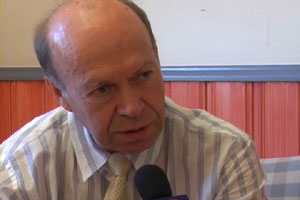
Dr. Hansen, like many of the more seasoned researchers of climate science, is increasingly concerned at what the studies are showing. These studies are based on three things: the Earth’s history, satellite data, and computer models.
The Goddard Institute for Space Studies has developed computer models to simulate the Earth’s climate from 1880 through to the present day. Dr. Hansen is quick to remind people that computer models are a useful tool, but cannot compare with the compelling truth told by the Earth’s past events.
This distinguished American scientist, leader and hero has received more than 20 awards, starting in 1977 with the Goddard Special Achievement Award.
On February 16, 2008, the American Association for the Advancement of Science (AAAS) honored him for his exemplary actions in helping foster scientific freedom and responsibility.
Dr. James Hansen had received the Shining World Hero Award from Supreme Master Ching Hai. For all his contribution and courage, the award was presented to him, “in recognition of boldly speaking the truth, generating worldwide awareness of the state of our planet, and advocating change to save our wondrous planet.”
For many years, Dr. Hansen has sounded the alarm on the worldwide threat of global warming.
Some of the tipping points to take note in relation to climate change include the melting of the Arctic ice sheets, extreme weather catastrophes and rising sea levels.
Climate variability also has an impact on agriculture by causing severe drought in some regions and extreme floods in others.
The Tällberg Forum in Sweden is an annual event organized by the Tällberg Foundation. Recognizing the global interdependence of our modern society, the event offers leaders of the world a chance to exchange ideas and search for answers to the world’s challenges in an atmosphere of open exchange.
At the 2008 Tällberg Forum, Supreme Master Television’s correspondent interviewed Dr. Hansen on the seriousness of climate change.
SUPREME MASTER TV (f):
Welcome to Supreme Master Television, Dr. James Hansen. It’s our great honor to meet you in person.
Dr. James Hansen (m): My pleasure. Glad to be here.
SUPREME MASTER TV (f):
Can you comment on what’s the situation now?
Dr. James Hansen (m): It’s hard for people to realize this because you don’t notice much happening; the global warming is about one degree Celsius (1.8 degrees Fahrenheit), and weather variations are much larger than that from one day to another.
So
you don’t notice that there’s a crisis, but in fact, we are at a crisis point now because we are very close to passing tipping points in the climate system that would have very undesirable consequences. In fact, we’ve actually passed one tipping point, and that’s
the Arctic Ocean. We’ve already reached a point where we’re going to lose all of the ice in the Arctic Ocean. Last summer, in 2007, about half of the ice in the Arctic melted.
The problem is that there are then positive feedbacks.
A tipping point occurs where there are amplifying feedbacks that can come into play and cause large change to occur very rapidly.
And in the case of the Arctic, the way it works is that as ice melts, that exposes darker ocean, which absorbs more sunlight that causes more ice to melt.
And now, because the planet is out of energy balance, there’s more energy coming in from sunlight than there is heat radiation going out.
And the reason for that is that greenhouse gases, carbon dioxide and methane and other gases that we’ve added to the atmosphere trap the heat radiation.
So because of this energy imbalance, we know that
the rest of that Arctic sea ice is going to melt, probably within five to ten years, maybe a little bit longer. But, in any case, we’ve passed that tipping point. Well that is a reversible tipping point.
If we were to reduce the amount of CO2 in the atmosphere so that the energy balance became zero or slightly negative, then the planet would cool off and the ice would come back.
But, what we’re concerned about is
bigger tipping points, ones which are not reversible on any time scale that’s of interest to humans; for example, the ice sheets on west Antarctica and Greenland.
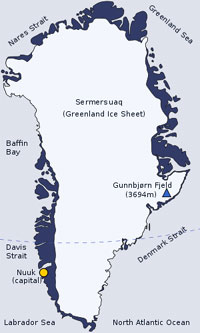
If those begin to disintegrate and slide into the ocean, then that’s irreversible on a time scale less than tens of thousands of years.
It takes a long time for an ice sheet to build up from snowfall. And the consequence of that, a sea level rise of several meters, would obviously be disastrous.
But
another tipping point, which is also irreversible, is the extermination of species. We’re already putting pressure on species because temperature lines are moving, moving towards the poles at a rate of about 50 or 60 kilometers (31 to 37 miles) per decade. And the temperature lines are moving upward in the atmosphere.
So those species that are on mountains have to move to higher levels to stay within their climatic zone, or to higher latitudes. And, for some degree of movement, that’s not a problem, but as it happens faster and faster, we can cause many species to go extinct.
And then, the tipping point is when so many go extinct, they depend upon each other, you can cause ecosystems to collapse, and then you lose many species.
Obviously, we don’t want that to happen. That’s happened in the Earth’s history several times. There has been very large global warming, five or six degrees Celsius(9 to 10.8 degrees Fahrenheit) more than half the species on the planet went extinct and new ones came into being, but took hundreds of thousands of years.
Obviously, that’s a time scale we can’t even think about. So, we want to avoid those tipping points.
SUPREME MASTER TV (f):
Have we passed any other point of no return?
Dr. James Hansen (m): The point of no return is when you get to a place where the dynamics of the system takes over, and then you can’t do anything about it. It’s too late. So if the ice sheet starts to slide down the slope toward the ocean, then it’s too late. You can reduce the greenhouse gases, but it’s not going to stop that ice sheet. We don’t want to get to a point of no return. I don’t think we are there yet, but in the case of the ice sheets, we may be getting close.
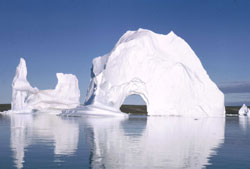
Because, if we go back to 1990, then Greenland was approximately in mass balance, we would have the same amount; it would get heavier during the winter as snowfall piled up, and then the edges would melt in the summer, and it was approximately in balance.
But it started to lose more mass in the summer than it gains in the winter. And last year, in 2007, it lost at least 250 cubic kilometers (60 cubic miles) of ice during the year. And that sounds like a lot, but it’s less than a millimeter of sea level.
But, altogether, the sea level is going up 3½ centimeters (1.4 inch) per decade; it’s affecting some island nations.
But the danger is that it could go up to a much higher rate, because we know that
in the Earth’s history there have been times when sea level has gone up very fast, and we really don’t want to pass that point of no return.
SUPREME MASTER TV (f):
So where are we now? What can we do now?
Dr. James Hansen (m): In fact there are practical solutions. I think it’s important to point out that these solutions actually have many desirable characteristics.
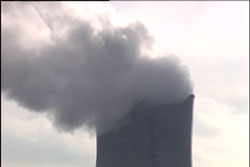
It’s actually a brighter future beyond fossil fuels.
The basic problem is burning the fossil fuels. We cannot burn all of the fossil fuels, all of the coal in the ground. Coal is the biggest contributor to this. If we burn all of that, put it in the atmosphere, the Earth would be headed toward the ice-free state, where it was when that carbon was in the atmosphere before.
We can’t let that happen.
We’re going to have to move to energy sources beyond fossil fuels, and that actually has many advantages. So, for example, I think that we need to have, within the United States and within Europe and within China, we need to set up low-loss electric grids, which allow the energy from renewable energy such as solar power, wind power, to be transmitted long distances without losing the energy.
The current electric grids, alternating current grids, lose their energy pretty fast, so you can’t transmit it very long distances. But there is technology, a direct current high-voltage grid that could transmit energy long distances and allow renewable energies to take over in the long run.
And that has many advantages; first of all a cleaner atmosphere and oceans, reduce the air pollution. And it reduces the need for importing energy from places where you may be not confident of getting the energy on a long time scale.
And it preserves the planet, it preserves creation. So there are many positive things about solving the problem, and we could do that. But it does take leadership.
SUPREME MASTER TV (f):
Does the government, are most of them doing something?
Dr. James Hansen (m): The governments, they talk about reducing emissions by X%, the truth is,
we’re going to have to reduce carbon emissions by approximately 100% because the carbon dioxide that we put in the atmosphere will stay there, much of it, for more than a thousand years.Dr. James Hansen (m): We just simply cannot burn all these fossil fuels and put the CO2 in the atmosphere. Governments think they can make small changes and maybe that’ll be good enough.
But it won’t. It’s become very clear that we’re going to have to have dramatic changes.
SUPREME MASTER TV (f):
So, the policymaker has to make decisions quick now?
Dr. James Hansen (m):
Yes, we’re really running out of time. In fact, I think this next year or two years are the critical time period. With the need for an international agreement to follow the Kyoto Protocol, this is the time that we have to make major direction-changing decisions.
Part 2SUPREME MASTER TV (f):
If we follow the pace that we are going now, will there be disasters soon?
Dr. James Hansen (m): Yes, we need some transformative changes.
So, what I would hope is, for example, that the United States would announce a project like a low-loss national grid, electrical grid. And say, “We’ll do this within a decade.” And it could be done. And it would allow us to wean ourselves off of fossil fuels.
SUPREME MASTER TV (f):
So, what they’re talking about is CCS (Carbon Capture and Storage), like capture the carbon is not really working.
Dr. James Hansen (m):Well, carbon capture and storage, burning coal at power plants where you capture the CO2 and store it underground.
Frankly, my suspicion is that once we explore all the options, that’s probably not the best one because you still emit mercury, which is a pollutant.
And you still have regional pollution due to mountain top removal and pollution of streams.
And coal is a finite resource. So, it might last most of the century, but it’s not an infinite supply.
SUPREME MASTER TV (f):
In the newspaper, I think it was the 23rd of June, they talked about “Remember #350, the rest of your life!”
What does this have to do in terms of climate change?
Dr. James Hansen (m): 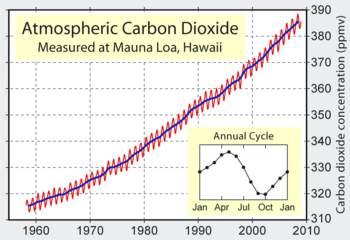
350 refers to the amount of CO2 in the atmosphere.
Now, during the Holocene, the last 12,000 years, CO2 was about 280 parts per million. Now, humans by burning fossil fuels, have increased that to 385. And it’s headed toward higher levels. It’s increasing about 2 each year.
Well, we’ve realized that we’ve gone too far.
We’re going to have to reduce CO2, back to at least 350 and probably even lower. But the point of 350 is that it’s lower than what we are now. So, the policies that we’re going to need in order to get there would be the same if it turns out that the optimum level is really 325 or 300 or 280. Then, we’re going to have to go through 350.
So the point is just to make people realize that we’ve already one too far.
SUPREME MASTER TV (f):
So, all these disasters around the world are absolutely connected to the climate crisis?
Dr. James Hansen (m):Well, you can’t say that all disasters in the world are connected to climate disaster, but what you can say, is that
global warming increases the intensity of both extremes of the hydrologic cycle, the water cycle. So, at the times and places when it’s dry, a stronger greenhouse effect means that you get stronger drying and higher temperatures,
more extreme drought and as a result more widespread forest fires. But, on the other hand, the other extreme of the hydrologic cycle also gets enhanced, because as the atmosphere gets warmer, it holds more water vapor. At a very strong rate, the amount increases with temperature, and therefore when it does rain,
there’s a possibility of much heavier rains.
So, we get, not all the time, but we get some much stronger rainfalls and therefore heavier floods.
And so, that these on a statistical basis, we can see both of these things are happening. Without any doubt they are both happening.
And in fact, where I live, near the Delaware River, we’ve had -two hundred year floods in the last ten years.
And where I used to live in Iowa, we’ve had two 500-year floods in the last 15 years.
And I think that although you can’t blame a specific flood and say, ok, this was caused by greenhouse effect.
But,
the frequency with which these happen and the severity of them is definitely affected by global warming. HOST:
Today on Planet Earth: Our Loving Home, Supreme Master Television features an interview with Dr. James Hansen on more effective actions in halting climate change.
SUPREME MASTER TV (f):
We have heard this speech from the IPCC, climate change panel. And they won the Nobel Prize together with Al Gore.
IPCC Chief Dr. Pachuari said, “If the government is moving too slow, at least for the average people, individuals, the simple thing to do is eating less meat, ride a bicycle or be a frugal shopper,” or these kinds of simple steps.
What do you say about his?
Dr. James Hansen (m): Well, sure. The things that individuals can do are helpful.
And one of the most helpful is actually a vegetarian diet, that produces much less greenhouse gases than a meat diet. But because individuals cannot solve the problem by themselves, they’ve got to have leadership because we’ve got to change policies.
We need things like electrical grids.
There are many things that only can be done with leadership.We have to have changes in rules like energy efficiency of vehicles and building efficiencies and utilities right now make more money if they sell you more energy.
That’s not the way we should set up the rules for utilities.
We should change it such that, if they help us save energy, save greenhouse gases, then they can make more profit.
There are a lot of things that only the government can do; the individuals cannot make those changes.
SUPREME MASTER TV (f):
So, the individuals, what can you recommend them to do?
Dr. James Hansen (m): There are many places in the US, in Germany and England, where citizens are starting to object to plans for new coal-fired power plants.
That is extremely valuable for citizens to do that.
And also, they’ve been able to block the drilling for oil in places like the Arctic National Wildlife Refuge and offshore of some of the states, on public lands.
And that’s also very helpful, because it simply doesn’t make sense to try to get every last drop of oil out of the ground.
We need to get off of our addiction to oil, and get onto clean sources of energy.
SUPREME MASTER TV (f):
And there are a lot of publications that are saying that it is already available, for a long time, this kind of clean, sustainable energy.
Dr. James Hansen (m): Well, clean energies are available, but so far, they are a small part of the total.
But some of them are close to being able to do a big part of the job.
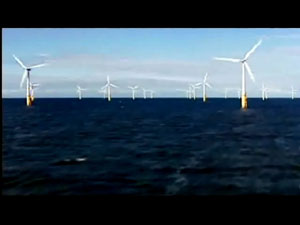
Solar thermal for example, where sunlight is concentrated by means of mirrors and used to heat a fluid, and then drive an electrical generator.
That now works well enough that you can make a power plant that uses solar energy.
In fact, in the United States, there’s enough energy in the southwest desert to provide electricity for the entire country, but you would need an electrical grid to do that.
SUPREME MASTER TV (f):
At the same time, there’s a report that says, from the U.N. agricultural, that raising animals for food causes more greenhouse gases than all transport.
If people turn to vegetarianism, and then to push the government and policy makers.
Dr. James Hansen (m):
Yeah, I think pushing the government and policy makers is the most important thing, and include pushing them not only by voting, but also by opposing things which are obviously bad policy.
Dr. James Hansen (m):Well, I think we should not only emphasize the problem, but the fact that the solution has many great characteristics: clean atmosphere, renewable energies, and preserving creation, the planet that we have had for the last several thousand years.
SUPREME MASTER TV (f):
How much time do we have left to make the action and to reverse the situation or at least stop the crises?
Dr. James Hansen (m):
How much time do we have left?
Well, I said two years ago that we had ten years, but I meant ten years to get on a different path. That means
we have to start changing direction now. Because of the Kyoto Protocol expiring, it really means in the next year or year and a half, we really need to get on a different path.
SUPREME MASTER TV (f):
Thank you very much, Dr. Hansen. It’s a great pleasure, and thank you for your noble effort. Wish you the best!
Dr. James Hansen (m):
Thank you.
HOST:
Once again, we express our deep appreciation to Dr. Hansen for sharing his expertise and acknowledging that the vegetarian, meaning animal-free diet is one of the single most effective ways individuals can reduce their greenhouse gas emissions.
May his planet-saving work continue to bring awareness to public on the urgency to carry out actions to regain the balance of our ecosystem.



